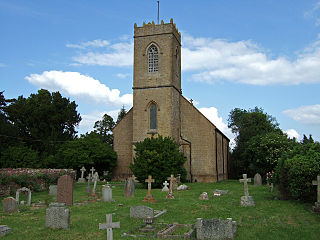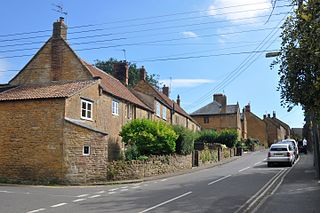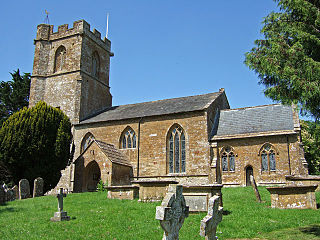| Yeovil Rural District | |
|---|---|
| Area | |
| • 1911 | 54,898 acres (222.16 km2) [1] |
| • 1961 | 53,457 [1] |
| Population | |
| • 1911 | 16,457 [2] |
| • 1961 | 24,827 [2] |
| History | |
| • Created | 1894 |
| • Abolished | 1974 |
| Status | Rural district |
Yeovil was a rural district in Somerset, England, from 1894 to 1974.
Rural districts were a type of local government area – now superseded – established at the end of the 19th century in England, Wales, and Ireland for the administration of predominantly rural areas at a level lower than that of the administrative counties.

Somerset is a county in South West England which borders Gloucestershire and Bristol to the north, Wiltshire to the east, Dorset to the south-east and Devon to the south-west. It is bounded to the north and west by the Severn Estuary and the Bristol Channel, its coastline facing southeastern Wales. Its traditional border with Gloucestershire is the River Avon. Somerset's county town is Taunton.
It was created in 1894 under the Local Government Act 1894.

The Local Government Act 1894 was an Act of the Parliament of the United Kingdom that reformed local government in England and Wales outside the County of London. The Act followed the reforms carried out at county level under the Local Government Act 1888. The 1894 legislation introduced elected councils at district and parish level.
In 1974 it was abolished under the Local Government Act 1972 when it became part of South Somerset.

The Local Government Act 1972 is an Act of the Parliament of the United Kingdom that reformed local government in England and Wales on 1 April 1974.

South Somerset is a local government district in Somerset, England.
The parishes which were part of the district included Ash, Barwick, Brympton, Chilthorne Domer, Chilton Cantelo, Chiselborough, Closworth, East Chinnock, East Coker, Hardington Mandeville, Haselbury Plucknett, Ilchester, Limington, Long Load, Marston Magna, Martock, Montacute, Mudford, North Perrott, Norton Sub Hamdon, Odcombe, Rimpton, South Petherton, Stoke sub Hamdon, Tintinhull, West Camel, West Chinnock, West Coker, Yeovil Without and Yeovilton.

Ash is a village and parish in Somerset, England, situated 1 mile (1.6 km) from Martock and 6 miles (9.7 km) north-west of Yeovil in the South Somerset district. The parish has a population of 626. The parish includes the hamlets of Milton and Witcombe.

Barwick is a village and parish in Somerset, England, situated 2 miles (3.2 km) south of Yeovil in the South Somerset district and on the border with Dorset. The parish, which includes the village of Stoford has a population of 1,221.

Brympton is a civil parish and electoral ward in Somerset, England. The parish is situated on the north-west edge of Yeovil in the South Somerset district. The parish/ward has a population of 7,308. Although most of the population lives within Yeovil, the parish includes the hamlets of Brympton D'Evercy, Lufton, Thorne Coffin and Alvington as well as part of Chilthorne Domer.






